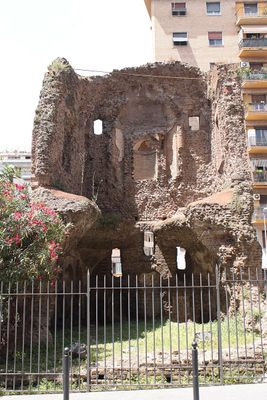About
Aelius Callistion (in Italian Elio Callistio), a freedman of Emperor Hadrian, would have never imagined that his then fashionable, temple-shaped sepulcher would become popular in Roman folklore. Indeed, as the sepulcher fell to ruins, it strangely started assuming the shape of a great chair or throne.
Wayfarers and others who maintained seedy reputations were said to lurk in its shadows and light mysterious fires. This often gave the ruins a glowing appearance amid the night sky. According to legends from the Middle Ages, the Devil used the ruins as a throne and caused its collapse. This gave rise to the ruin's moniker. The name stuck, and until the 1950s, the square was known as Piazza della Sedia del Diavolo.
The square was renamed after Callistion in 1958, even if the tomb's attribution to the Imperial freedman remains uncertain. The sepulcher consists of two levels with an underground chamber decorated with white mosaics. The sepulcher is of the naiskos type, a popular temple-like shape that is also found in other sepulchers in the Appia-Tuscolana district of Rome.
Related Tags
Flavors of Italy: Roman Carbonara, Florentine Steak & Venetian Cocktails
Savor local cuisine across Rome, Florence & Venice.
Book NowPublished
November 12, 2020






















